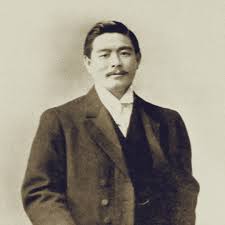
Jiu Jitsu : Mitsuyo Maeda and BJJ
Mitsuyo Maeda: The Man Who Spread Jiu-Jitsu Across the World
Mitsuyo Maeda—also known as "Count Koma"—was more than a formidable judoka and jiu-jitsu practitioner. He was a global pioneer, bridging ancient Japanese martial traditions with the modern evolution of Brazilian Jiu-Jitsu (BJJ). Without Maeda’s relentless travels, teachings, and resilience, the landscape of combat sports as we know it today would be vastly different.
Through a life defined by discipline, adaptability, and tenacity, Maeda ignited a chain of influence that transformed localized martial knowledge into a worldwide phenomenon.
Early Life and Training
Born in 1878 in Funazawa Village, Hirosaki, Japan, Mitsuyo Maeda began his martial arts journey training in traditional Japanese Jujutsu before joining the Kodokan—the birthplace of modern Judo. Under the guidance of Jigoro Kano, Judo’s founder, Maeda quickly distinguished himself with his physical strength, technical precision, and fearless spirit in challenge matches.
His mastery of throws, submissions, and positional control made him a standout among Kano’s top disciples.
A Global Martial Arts Ambassador
In the early 20th century, Maeda was selected as part of a diplomatic mission to promote Judo worldwide. This journey took him across the globe—from the United States and Europe to Cuba and ultimately Brazil—where he engaged in exhibition matches and no-holds-barred contests to prove the effectiveness of Judo against diverse fighting styles.
Adopting the moniker “Count Koma,” Maeda skillfully navigated Western cultural landscapes while retaining his Japanese identity.
Brazil and the Birth of Brazilian Jiu-Jitsu
Maeda arrived in Brazil in 1914 and eventually settled in Belém do Pará. There, he met Carlos Gracie, a young boy who became his dedicated student. Maeda imparted not only techniques of Judo and Jiu-Jitsu but also essential principles of leverage, timing, and adaptability. Carlos passed these lessons on to his brothers, most notably Hélio Gracie, who adapted the art to suit a smaller, less physically imposing frame.
From these teachings, Brazilian Jiu-Jitsu was born—a system emphasizing ground fighting, positional control, and submissions, tailored for real-life self-defense and competitive combat.
Fighting Style and Legacy
Maeda’s style was pragmatic and battle-hardened. It is said he fought over 2,000 matches worldwide, often against larger opponents and fighters from other disciplines including boxers and wrestlers. His approach was revolutionary: blending throws, ground control, and submissions seamlessly, prioritizing real-world effectiveness over formality.
More than a fighter, Maeda was a teacher, strategist, and innovator. His vision centered on evolution—adapting techniques for different opponents, scenarios, and body types.
The Godfather of Brazilian Jiu-Jitsu
Today, Mitsuyo Maeda is honored as the foundational link between Japanese Judo/Jujutsu and Brazilian Jiu-Jitsu. Without his influence, the lineage leading to grappling legends—Royce Gracie, Marcus “Buchecha” Almeida, Gordon Ryan, and many others—would not exist.
Maeda’s impact stretches far beyond Brazil. Every academy, belt promotion, and grappling match in cages or on mats worldwide echoes his pioneering spirit.
He did not simply teach a martial art—he planted the seed for a global movement.
Author: Paragon Elite Fight Group – Research and Development Team
Published: 28/05/2025
Website: www.paragonelitefight.com
Contact: [email protected]
At Paragon Elite Fight, we don’t just train—we evolve. Born from Hellas and forged in the legacy of Pankration, we pursue excellence, innovation, and authenticity relentlessly. Every word we write honors real warriors, real battles, and the enduring spirit of those who choose the hard road—the worthy road.
Whether in the cage, on the streets, or in life, we create for those who train harder, think deeper, and never stop fighting.
Join us at www.paragonelitefight.com to explore more articles, elite gear, and resources crafted for fighters who demand more from themselves—and their tools.
